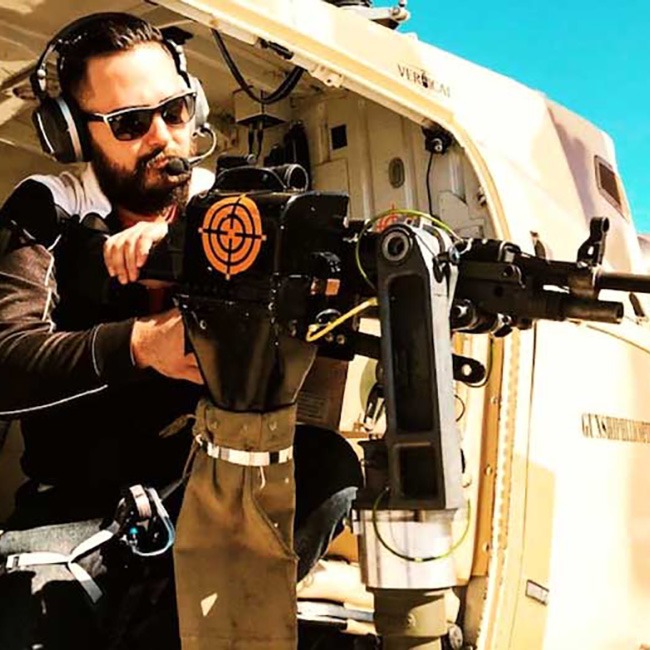The article provides valuable insights for beginners venturing into the world of aerial photography. It offers seven essential tips for first-time aerial shooters, covering aspects such as equipment selection, safety measures, understanding weather conditions, planning the shoot, mastering flight controls, focusing on composition, and post-processing techniques. These tips aim to guide novices in capturing stunning aerial shots while ensuring a safe and efficient shooting experience.
7 Essential Aerial Shooting Tips for Beginners: A Comprehensive Guide
Aerial photography is a captivating art form that offers a unique perspective of the world. It’s a thrilling venture that combines the love of photography with the excitement of flight. However, for first-time aerial shooters, it can be a daunting task. Here are seven essential tips to help you navigate this exciting new terrain.
Firstly, understanding your equipment is crucial. Familiarize yourself with your drone or aircraft and its camera settings. Knowing how to adjust the ISO, shutter speed, and aperture will allow you to capture the best possible images. Also, ensure you have a good understanding of the drone’s flight controls. This will not only help you fly safely but also allow you to maneuver the drone to capture the best shots.
Secondly, planning is key. Before you take off, research the location you plan to shoot. Look for interesting landmarks, patterns, or colors that could make for a compelling photograph. Also, consider the time of day. The golden hours, just after sunrise and just before sunset, often provide the most beautiful light for photography.
Thirdly, remember to keep it simple. It’s easy to get overwhelmed by the vastness of the view from above. However, the most effective aerial photographs often have a clear subject and a simple composition. Look for strong lines, shapes, or contrasts to create a striking image.
Fourthly, don’t forget about the weather. Weather conditions can significantly impact your aerial photography. Clear, sunny days can provide excellent visibility, but overcast days can offer more diffused light and dramatic skies. Always check the weather forecast before you plan to fly.
Fifthly, practice makes perfect. Don’t be discouraged if your first few flights don’t yield the results you were hoping for. Aerial photography requires a unique set of skills that can only be honed through practice. The more you fly, the more comfortable you’ll become with controlling your drone and framing your shots.
Sixthly, safety should always be your top priority. Always follow local laws and regulations regarding drone flight. Be aware of your surroundings and avoid flying over people or private property without permission. Also, always keep your drone within your line of sight and never fly in conditions where you can’t see it clearly.
Lastly, don’t forget to enjoy the process. Aerial photography is a unique and exciting form of art. It allows you to see the world from a new perspective and capture images that would be impossible from the ground. So, while it’s important to focus on getting the perfect shot, don’t forget to take a moment to appreciate the beauty of the view from above.
In conclusion, aerial photography can be a challenging but rewarding endeavor. By understanding your equipment, planning your shoots, keeping your compositions simple, considering the weather, practicing regularly, prioritizing safety, and enjoying the process, you can master the art of aerial shooting. So, take to the skies and start capturing the world from a whole new perspective.
Helicopter Shooting Advice: 7 Key Tips for First-Time Aerial Shooters
Aerial photography is a unique and exciting field that offers a fresh perspective on the world. However, for first-time aerial shooters, capturing stunning images from a helicopter can be a daunting task. Here are seven key tips to help you navigate this thrilling yet challenging endeavor.
Firstly, it’s crucial to understand your equipment. Familiarize yourself with your camera’s settings and capabilities before you take to the skies. This includes knowing how to quickly adjust your shutter speed, aperture, and ISO. A fast shutter speed is particularly important in aerial photography to counteract the movement of the helicopter and ensure sharp images.
Secondly, consider your lens choice carefully. While wide-angle lenses can capture expansive vistas, they can also distort the image and make it difficult to frame your shots accurately. A medium focal length lens, such as a 24-70mm, is often a good choice for aerial photography as it offers a balance between wide-angle and telephoto capabilities.
Thirdly, always shoot in RAW format. This will give you the maximum amount of data to work with in post-production, allowing you to correct any exposure or color balance issues that may arise due to the changing light conditions in the air.
The fourth tip is to plan your shoot meticulously. Research your location thoroughly and consider the time of day, weather conditions, and the direction of the sun. This will help you anticipate the challenges you may face and prepare accordingly.
Fifthly, communication is key. Make sure you have a clear line of communication with your pilot. Discuss your shooting plan with them and ensure they understand what you’re trying to achieve. They can provide valuable input and help position the helicopter to get the best shots.
The sixth tip is to keep safety paramount. Always wear a harness and ensure your equipment is securely attached to you. Never lean out of the helicopter more than necessary and always follow the pilot’s safety instructions.
Finally, remember to enjoy the experience. Aerial photography offers a unique opportunity to see the world from a new perspective. While it’s important to focus on getting the perfect shot, don’t forget to take a moment to appreciate the view.
In conclusion, aerial photography from a helicopter can be a challenging yet rewarding endeavor. By understanding your equipment, choosing the right lens, shooting in RAW, planning your shoot, communicating with your pilot, prioritizing safety, and enjoying the experience, you can navigate the challenges and capture stunning images. Remember, like any skill, aerial photography takes practice. So don’t be disheartened if your first few attempts don’t yield the results you’re hoping for. Keep learning, keep shooting, and with time, you’ll master the art of aerial photography.
Mastering the Sky: 7 Crucial Tips for First-Time Aerial Photography
Mastering the Sky: 7 Crucial Tips for First-Time Aerial Photography
Aerial photography is a captivating art form that offers a unique perspective of the world. It’s a thrilling venture that combines the love of photography with the exhilaration of flight. However, for first-time aerial shooters, it can be a daunting task. Here are seven crucial tips to help you navigate this exciting realm of photography.
Firstly, understanding your equipment is paramount. Aerial photography requires specific gear, primarily drones. Drones come in various models, each with its unique features and capabilities. It’s essential to familiarize yourself with your drone’s operation, its camera settings, and how to maneuver it safely and effectively. Spend time practicing your flying skills before embarking on your first aerial shoot.
Secondly, planning is key. Before you take to the skies, research your location thoroughly. Understand the weather patterns, the best times for lighting, and any potential obstacles or restrictions. Use tools like Google Earth to get a sense of the landscape and plan your shots.
Thirdly, remember that safety should always be your top priority. Always adhere to local laws and regulations regarding drone flight. Be aware of your surroundings, avoid flying over people or private property, and always keep your drone within your line of sight.
The fourth tip is to master the art of composition. Aerial photography offers a unique perspective, but it also presents new challenges in framing your shots. Experiment with different angles and heights to find the most compelling composition. Look for patterns, lines, and contrasts that can add depth and interest to your images.
Fifthly, don’t forget about the importance of lighting. Just like in traditional photography, lighting can make or break your aerial shots. The golden hours—shortly after sunrise or before sunset—often provide the most flattering light. However, don’t be afraid to experiment with different times of day and weather conditions to create dramatic and unique images.
The sixth tip is to always shoot in RAW format. RAW images capture more detail and allow for greater flexibility in post-processing. This can be particularly beneficial in aerial photography, where lighting conditions can change rapidly, and the detail can be critical.
Finally, practice patience. Aerial photography requires a lot of trial and error. Don’t be discouraged if your first few flights don’t yield the results you’re hoping for. Keep practicing, keep learning, and don’t be afraid to make mistakes. With time and persistence, you’ll start to see your skills improve and your images come to life.
In conclusion, aerial photography is a thrilling and rewarding pursuit. It offers a unique perspective and endless opportunities for creativity. However, it also requires a solid understanding of your equipment, careful planning, a keen eye for composition, and a commitment to safety. By following these seven tips, you’ll be well on your way to mastering the sky and capturing stunning aerial images. Remember, the sky is not the limit; it’s just the beginning.
Q&A
Question 1: What are some tips for first-time aerial shooters?
Answer 1: Some tips for first-time aerial shooters include planning the shoot in advance, checking the weather conditions, understanding the drone controls, starting with simple shots, respecting privacy and laws, ensuring the drone is in good condition, and practicing before the actual shoot.
Question 2: Why is it important to check the weather conditions before an aerial shoot?
Answer 2: Checking the weather conditions is important because adverse weather like high winds, rain, or snow can affect the drone’s performance and the quality of the footage. It can also pose safety risks.
Question 3: How can practicing before the actual shoot benefit first-time aerial shooters?
Answer 3: Practicing before the actual shoot allows first-time aerial shooters to familiarize themselves with the drone controls, understand how the drone responds to commands, and helps them to get comfortable with maneuvering the drone. This can lead to better footage and reduce the risk of accidents.In conclusion, first-time aerial shooters should prioritize safety, understand their equipment, plan their shots, consider the weather, use the right settings, practice flying, and respect privacy laws. These tips will not only enhance their shooting skills but also ensure they produce high-quality aerial footage while adhering to legal and ethical standards.

